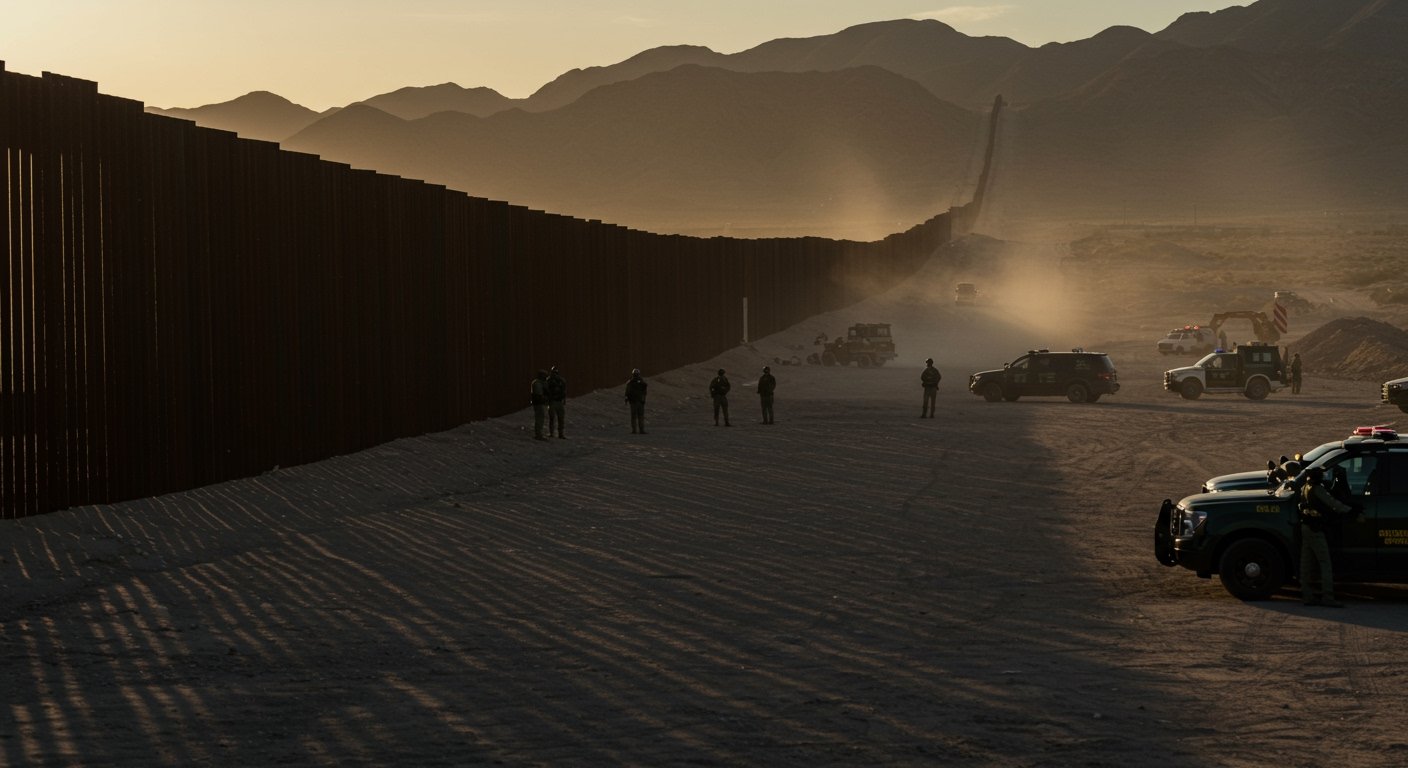Washington D.C. — While migration levels at the U.S.-Mexico border in May 2025 remained near lows not seen in roughly 60 years, recent data indicates a slight uptick in encounters compared to the preceding months of March and April. The evolving situation is coupled with intensified enforcement efforts in inland U.S. cities and significant legislative action advancing through the U.S. Congress, according to a weekly update from the Washington Office on Latin America (WOLA) published on June 20, 2025.
Migration Trends in May 2025
The WOLA report details that U.S. Border Patrol, responsible for patrolling areas between official ports of entry, apprehended 8,725 migrants during the month of May. This figure represents a modest increase from the two previous months, although the overall context remains one of historically low migration flows when viewed over a multi-decade span.
The total number of individuals held in U.S. Customs and Border Protection (CBP) custody across all sectors stood at 12,452 people in May 2025. This encompasses individuals encountered both between ports and at official crossing points.
Demographic Shifts and Sector Focus
An analysis of the demographic makeup of those apprehended by Border Patrol in May reveals distinct patterns. A significant majority, 72%, were identified as citizens of Mexico. Similarly, 84% of those apprehended were single adults, a demographic that has often constituted a large portion of border encounters.
Notably, the report highlighted an increase in the number of unaccompanied minors apprehended by Border Patrol, which rose by 28% from April to May. This demographic group requires specific processing and care protocols, typically involving transfer to the Department of Health and Human Services (HHS).
The El Paso sector, encompassing parts of Texas and New Mexico, continued to be the busiest sector along the U.S.-Mexico border for the fourth consecutive month in May 2025. The WOLA report also pointed to a concerning trend in this sector: a reported rise in migrant deaths, underscoring the persistent dangers faced by individuals attempting the journey.
Enforcement Intensifies Inland
Beyond the immediate border region, enforcement actions by U.S. Immigration and Customs Enforcement (ICE) have reportedly intensified in areas further inland. This includes operations targeting individuals suspected of being in the United States without authorization in cities such as Los Angeles.
These inland operations have received support from Border Patrol personnel. The WOLA update specifically mentions the involvement of Border Patrol personnel led by Gregory Bovino, who serves as the chief of Border Patrol’s El Centro Sector, indicating a collaborative approach between the two principal federal immigration enforcement agencies.
Congressional Action on Border Funding
Concurrently with these enforcement trends, legislative efforts in Washington D.C. are moving forward to allocate substantial new resources for border and immigration control. A large spending package, dubbed the “Big Beautiful Bill,” passed the House of Representatives on May 22nd, 2025. The bill is currently progressing through the Senate, signaling strong political will to dedicate significant funds to this policy area.
The “Big Beautiful Bill” proposes over $160 billion in new resources specifically earmarked for border and immigration enforcement, with funding projected to extend through fiscal year 2029. The proposed allocations within the bill include specific, substantial sums for various components of the enforcement and migration management system:
* $46.5 billion is proposed for the construction of a border wall.
* $45 billion is allocated for migrant detention facilities and related operations.
* $15 billion is designated for deportation efforts.
The advancement of this bill through Congress suggests a long-term commitment by lawmakers to invest heavily in physical barriers, detention capacity, and removal processes as central pillars of the U.S.’s immigration strategy.
Policy on Release
The WOLA report also provided insight into the U.S. government’s policy regarding the processing of apprehended migrants in May. According to the update, U.S. Border Patrol did not release any apprehended migrants into the U.S. interior during that month. All individuals encountered were either detained, deported back to their country of origin (or a transit country), or transferred to the Department of Health and Human Services, primarily applicable in the case of unaccompanied minors as required by law.
In summary, May 2025 saw migration levels remain historically low, although slightly above the preceding two months. This data coincides with reports of increased inland enforcement activity, particularly in Los Angeles with inter-agency support led by Chief Gregory Bovino. Furthermore, a major legislative push via the “Big Beautiful Bill,” proposing over $160 billion in future border security and immigration enforcement funding through fiscal year 2029, has cleared the House and is now under consideration in the Senate, indicating a significant potential investment in expanding the nation’s border control infrastructure and capacity.






